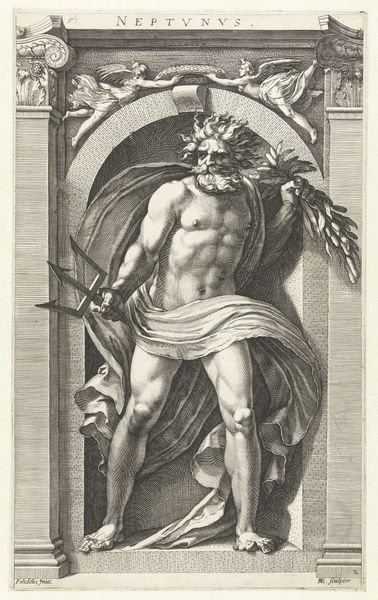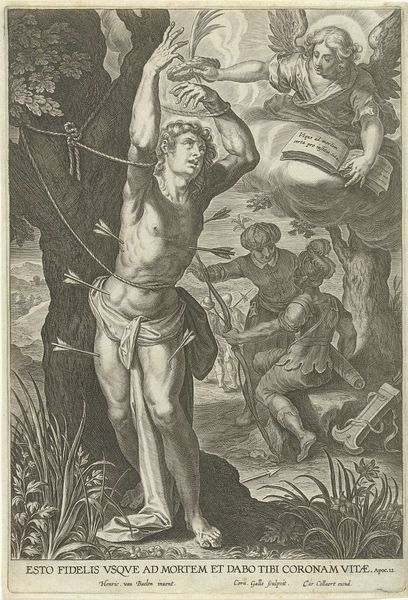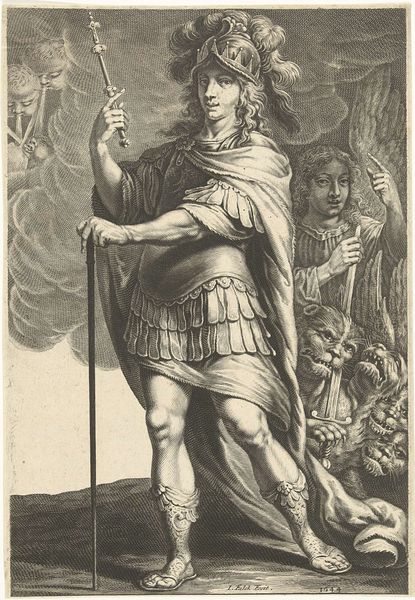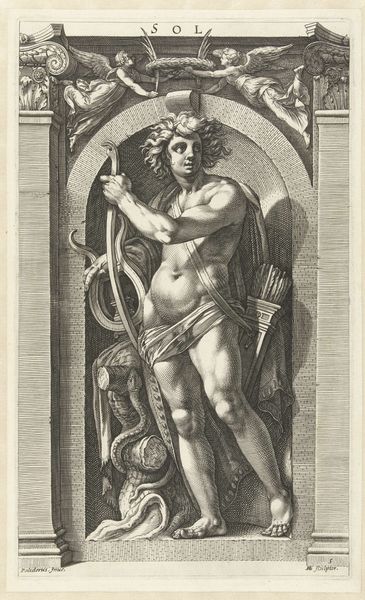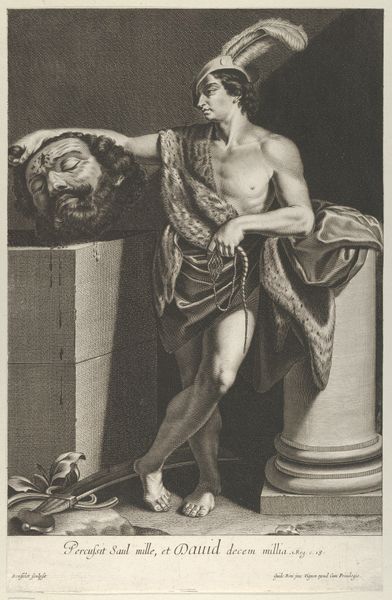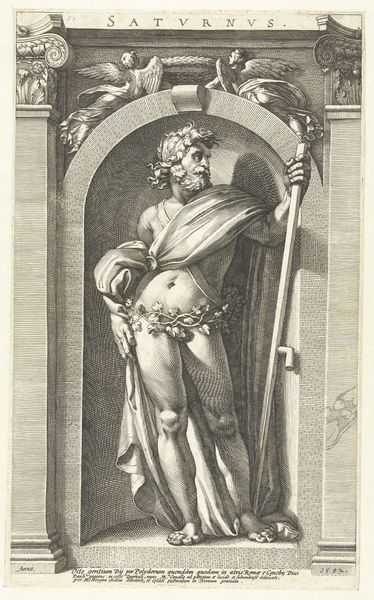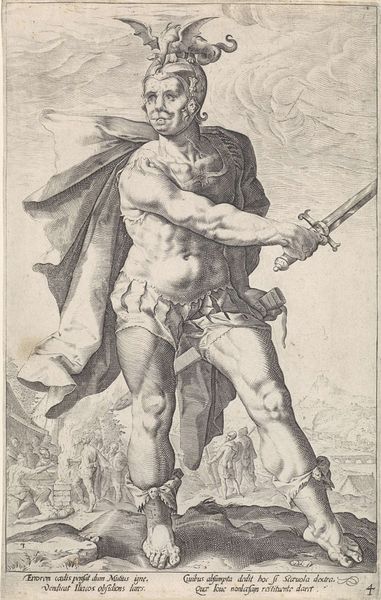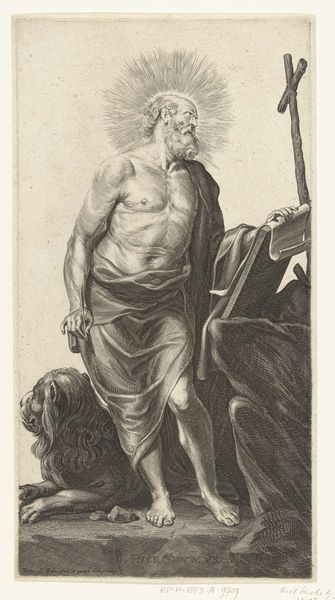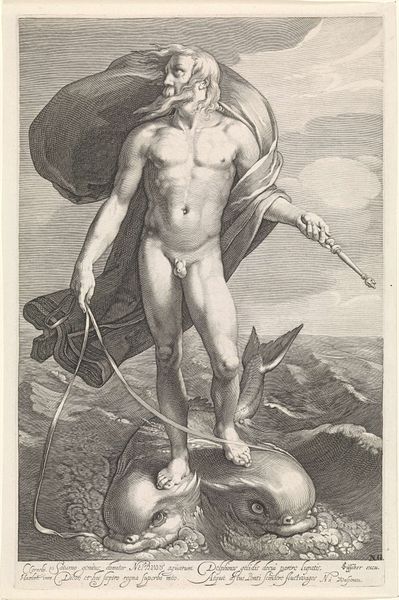
print, engraving
#
portrait
#
baroque
# print
#
old engraving style
#
caricature
#
figuration
#
portrait drawing
#
history-painting
#
engraving
Dimensions: height 362 mm, width 244 mm
Copyright: Rijks Museum: Open Domain
Curator: This print, "Narses en koning Totila" made in 1655 by Reinier van Persijn, depicts a victorious Narses. It's interesting, how does it strike you? Editor: I'm fascinated by the level of detail in the engraving, especially the contrast between light and shadow. What particularly draws your attention when you look at this print? Curator: It is interesting how this piece aims for propaganda more than it strives for true likeness or artistry. The very medium, engraving, speaks to its purpose. It’s reproducible, meant for widespread consumption. Note how the figure of Narses looms, literally standing upon the defeated Totila, signifying dominance. Editor: It almost feels like a comic strip. You can read it pretty easily. I see that. So, the choice of engraving wasn't just about aesthetics? Curator: Precisely. It’s about accessibility, and the power of images to shape narratives. Engravings allowed for mass production, spreading this vision of victory far and wide. Think of the labor involved: the engraver meticulously translating an idea onto a copper plate, each line reinforcing the intended message. Consider, too, who commissioned it and why? This wasn't simply about recording history; it was about constructing a specific version of it for political ends. What sort of meaning is built here using composition and imagery? Editor: So it's about control and who gets to write, or in this case, draw, the story? That makes sense considering the victor is standing above, looking victorious. Curator: Exactly! We are presented with a constructed narrative rather than a neutral image. It urges us to think critically about art not as a thing apart, but as deeply intertwined with production, consumption, and social power. Editor: I never really thought of prints as having an agenda; I figured they were just there for decor. Thanks to this Materialist approach, I understand this piece so much better now! Curator: It is important to not be taken in by a beautiful image. The intent is for you to uncritically consume the narrative presented before you, therefore unmasking it is of utmost importance.
Comments
No comments
Be the first to comment and join the conversation on the ultimate creative platform.
